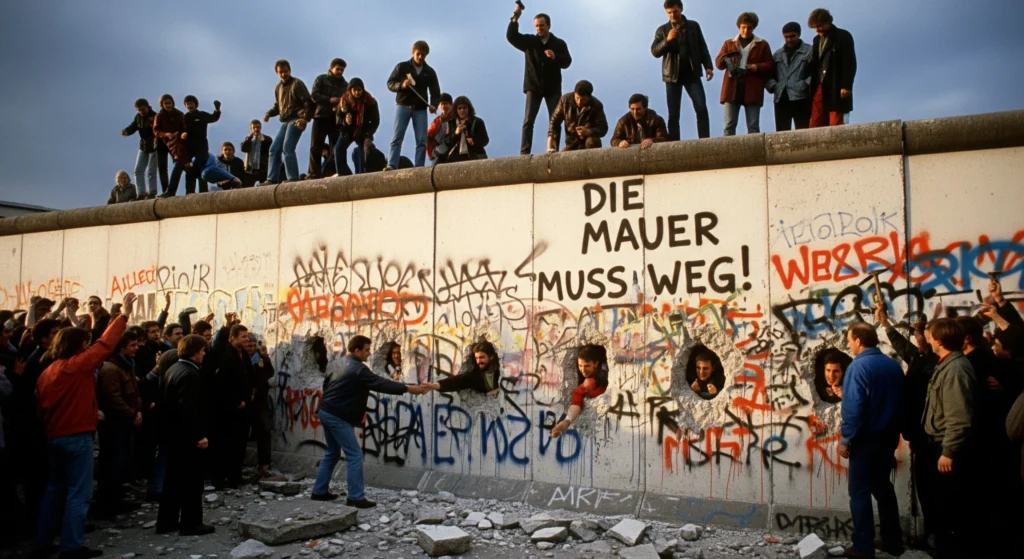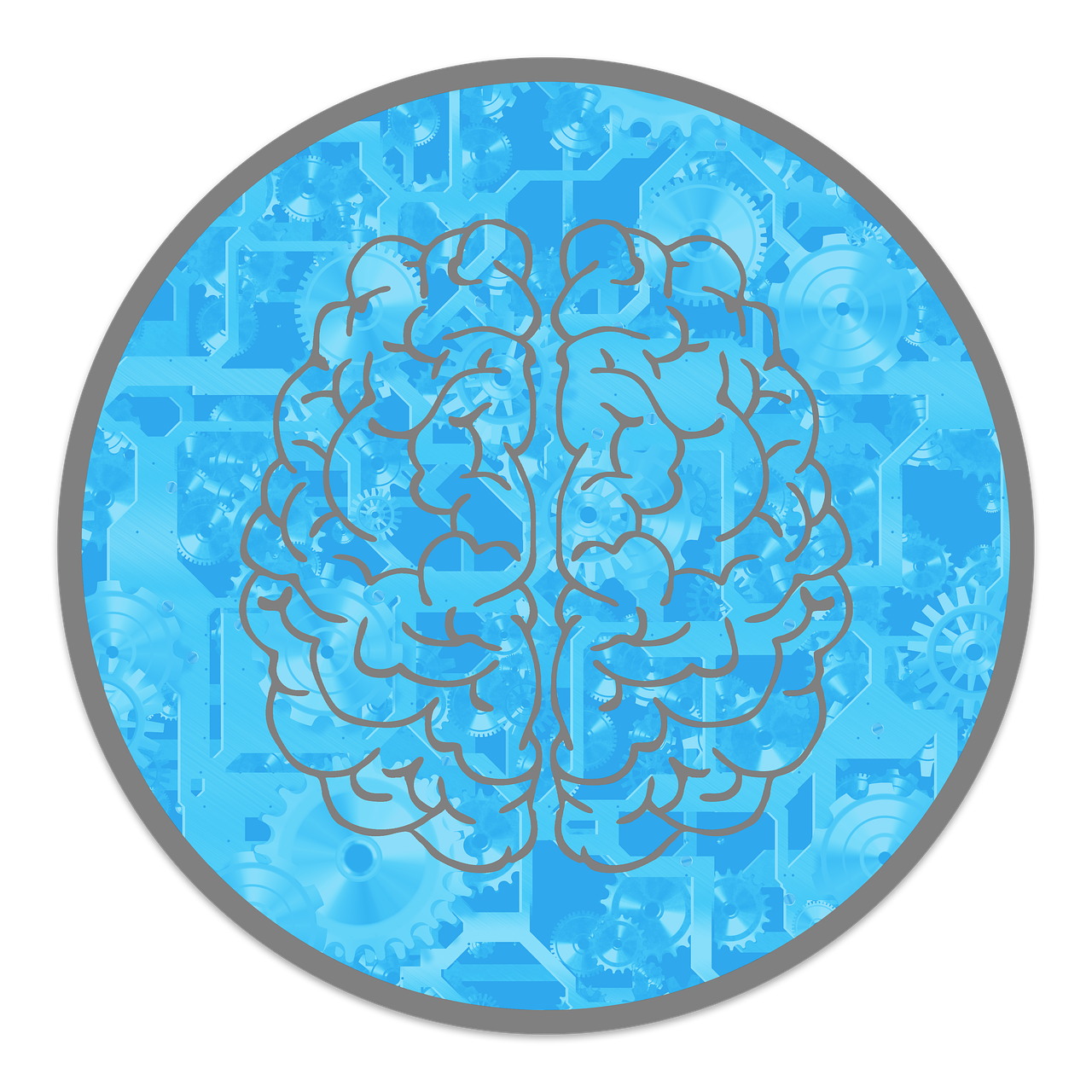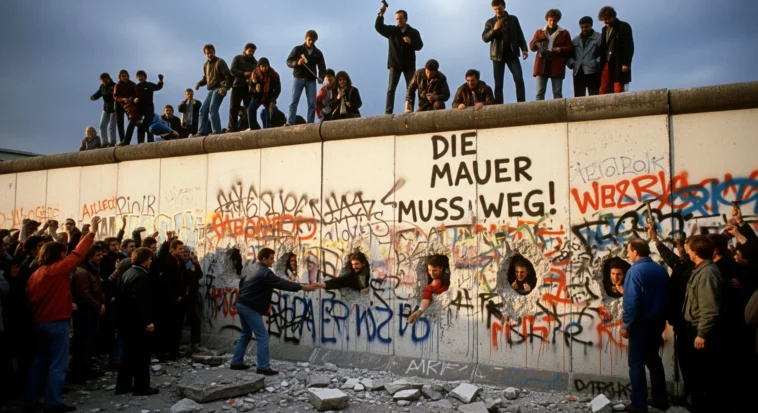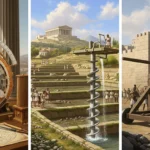
The date was November 9, 1989. After nearly three decades of splitting a city, a country, and even the world in two, the Berlin Wall finally fell.
Overnight, families hugged again, freedom returned, and the Cold War’s end came into view.
But here’s the thing — it didn’t just topple because people showed up with hammers.
It happened after years of political battles, economic struggles, and the unshakable human craving to be free.
The Birth of Division: Understanding the Berlin Wall’s Origins
To get why the Wall fell, you’ve got to know why it went up. After World War II, Germany was split between the U.S., Britain, France, and the Soviet Union.
Even Berlin — stuck inside Soviet territory — was divided the same way.
By the early ’60s, West Berlin was booming with democracy and capitalism, while East Berlin lagged under communism.
Millions of East Germans escaped through Berlin, and leaders panicked.
So, on August 13, 1961, East Germany threw up what they called the “Anti-Fascist Protection Rampart” — really just barbed wire, concrete, and guards.
Overnight, families were torn apart, and Berlin became a city cut in half.
The Cracks Begin to Show: Economic and Political Pressures
In the 1980s, the Soviet world started wobbling.
When Mikhail Gorbachev came in with glasnost (openness) and perestroika (restructuring), it was like someone finally cracked a window in a suffocating room.
Suddenly, people could breathe—and question.
Economic Strain on East Germany
East Germany was falling apart.
Imagine peeking over the Wall and seeing West Berlin bursting with shops, neon signs, and gadgets, while your own shelves were almost empty.
Debt skyrocketed, factories dragged behind, and everyone knew the black market was where you actually got what you needed.
The big problems were:
- Billions in debt by 1989
- Factories lagging behind the West
- Everyday items always in shortage
- A booming black market
Growing Civil Unrest
By the late ’80s, people were done staying quiet.
Churches gave them safe spaces to gather, Western TV showed what life could be, and travel restrictions felt insulting as nearby countries loosened theirs.
Even pollution became a rallying cry.
What fired people up:
- Church groups backing dissidents
- Western media inspiring change
- Anger at being locked in while neighbors traveled
- Environmental issues sparking protests
The Domino Effect: Eastern Europe’s Democratic Wave
The Berlin Wall didn’t fall all by itself—it was part of a chain reaction across Eastern Europe in 1989, a time people now call the “Autumn of Nations.”
Poland Leads the Way
The communist regime in Poland was challenged by Solidarity, a worker’s movement led by Lech Wasa (a former electrician turned national hero).
This movement gained widespread recognition.
In June 1989, they won large elections with semi-free voting, indicating that change was possible without tanks and bloodshed.
Hungary Opens Its Borders
For East Germans, Hungary was the real game-changer.
That summer, Hungary cut open its border with Austria, creating a secret doorway to the West.
Thousands of East Germans slipped through, and suddenly, the East German government looked powerless to stop it.
The Role of Gorbachev
And then there was Gorbachev. Unlike earlier Soviet leaders, he basically told Eastern Europe: “Do it your way” (nicknamed the Sinatra Doctrine).
When he visited East Germany in October, everyone realized the Red Army wasn’t coming to bail out dictators anymore.
That fear barrier—the one stronger than any concrete wall—was gone.
The Final Push: Events Leading to November 9, 1989
Mass Demonstrations in East Germany
October 1989 turned into one long, impossible-to-ignore protest.
The biggest waves started in Leipzig — think tens of thousands of ordinary people gathering every Monday.
On October 9, more than 70,000 marched together, chanting “Wir sind das Volk” (“We are the people”).
Imagine standing in that crowd — the air buzzing, everyone daring to be brave at once.
Why it mattered:
- The protests stayed peaceful even with government threats.
- The anger spread to Dresden, Berlin, and beyond.
- It showed the government was losing support — fast.
- People realized they didn’t have to live in fear anymore.
Leadership Crisis in East Germany
The old guard broke. Erich Honecker — the leader who’d helped construct and guard the Wall — was ousted from office on October 18, 1989.
His successor, Egon Krenz, attempted to soothe with promises of change, but it was too little, too late.
What caused the government to lose control:
- Thousands were continuing to flee through Hungary and Czechoslovakia.
- The weekly protests continued to grow and get more and more assertive.
- Western governments placed the squeeze.
- The economy was collapsing, making everything feel unstable.
November 9, 1989: The Night Everything Changed
The Fall of the Wall was never part of the plan — it was sparked by a simple mistake at a press conference.
The Fateful Press Conference
That evening, Günter Schabowski, an East German official, was asked when new travel rules would start.
Flipping through his notes, clearly confused, he blurted out: “As far as I know, immediately, without delay.” He had no idea those words would set history in motion.
The Stampede to the Wall
TV carried his words straight into people’s living rooms.
Within hours, thousands of East Berliners crowded the checkpoints shouting to be let through.
Guards had no orders, no plan, and no backup. Finally, overwhelmed and scared of riots, they just… opened the gates.
The Celebration Begins
And then? Pure magic. Families reunited after nearly three decades.
Teens and young adults climbed on top of the Wall, cheering and dancing.
People grabbed hammers and chisels to smash pieces off — they even got nicknamed “Mauerspechte” (wall woodpeckers).
Guards joined the party, champagne bottles popped, and the world watched a concrete prison crumble in one unforgettable night.
The Aftermath: From Division to Reunification
Tearing down the Wall was dramatic, but honestly? That was the easy part.
Rebuilding a united Germany — after nearly 30 years of being split in two — was messy, complicated, and way more than just knocking down concrete.
Immediate Consequences
Right after the Wall fell, it felt like the floodgates had opened:
- People rushed from East to West in huge numbers.
- The two economies started merging almost overnight with a shared currency.
- Politicians scrambled into high-speed talks about how to reunify.
- The world shifted too — it was clear the Cold War order was crumbling.
The Path to German Reunification
Less than a year after that, on October 3, 1990, Germany was officially one nation again.
Sounds abrupt, doesn’t it? But behind the scenes were hundreds of hard steps:
- Leaders on both sides banging out hard negotiations.
- World powers (such as the U.S. and Soviet Union) approving the agreement.
- Financial hardships that still reverberate today.
- East and West Germans learning to live, work, and even joke together again after decades apart.
Long-term Impact on Europe
Germany’s reunification wasn’t just about Germany — it was a domino effect.
- By 1991, the Soviet Union itself collapsed.
- NATO and the European Union expanded into the East.
- A brand-new security and economic order took shape, pulling ex-communist countries into the European family.
Lessons from History: Why the Berlin Wall Fell
So, what can we actually learn from the fall of the Berlin Wall? Turns out, it’s not just about history books — it’s about people, power, and how change really happens.
The Power of Popular Movements
Imagine thousands of regular people in Leipzig, marching week after week, chanting “We are the people.” No guns, no violence — just courage.
That’s what cracked the Wall.
It proves that when enough people stand together peacefully, even the biggest barriers can crumble.
Economic Factors in Political Change
Here’s the thing: governments lose power when they can’t put food on shelves or keep life moving.
East Germany’s economy was collapsing — shops were empty, tech was outdated, and people were fed up.
When daily life feels broken, people start asking, “Why are we even listening to these leaders?”
The Role of Leadership
Leaders matter — big time. Gorbachev’s reforms opened the door, while East German leaders fumbled with confusion and bad decisions.
Good leadership can spark progress; bad leadership can speed up a collapse.
Information and Communication
Next, a glance at Western TV or hearing foreign radio was looking into an alternative world.
East Germans were aware, “Wait, life doesn’t have to be like this.”
The minute individuals caught a glimpse of reality and could exchange it with others, the wall in their minds began to crumble even before the wall of concrete started falling apart.
Conclusion: The Berlin Wall’s Enduring Legacy
November 9, 1989—man, what a night. We’re not talking just about some concrete crumbling.
That was history deciding to totally flip the script.
Why’d the wall finally crumble?
Honestly, it was a wild cocktail of busted economies, gutsy moves by reformers, people pouring into the streets, and, yeah, some dude totally blowing it at a press conference. Oops.
But zoom out for a sec. No wall—no matter how thick, ugly, or covered in graffiti—can stand up forever when people are itching for something better.
And those old, grainy videos of Berliners hugging, crying, dancing on top of the mess? Still gets me.
They basically yell: hope trumps fear, coming together crushes division, and, all day long, freedom wrecks tyranny.



